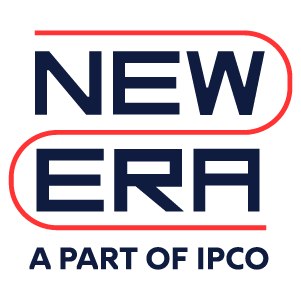The following is part one of a series of 3 blogs that will go through a white paper written by New Era Converting Machinery’s Bob Pasquale. The white paper is titled “Advancements in Wax Coating – Thinner, Faster.”
Part 1 will offer an overview of the entire paper and what to expect in coming blogs, as well as some brief background on wax coating and typical operating speeds and coating weights. Part 2 will go through improvements that have been made in roll and web handling, closed loop moisture control, and pre- and post-heating and cooling. Part 3 will wrap the series up with an explanation of recent drives and controls, coating application methods and design, and a brief conclusion.
—–
Part 1: Abstract and Background
ABSTRACT:
Over the past few years there has been a concerted effort by converters to reduce the cost of wax coated paper by applying thinner coatings at higher line speeds with better quality. This paper will explore the changes and improvements in equipment design that are being utilized to help achieve these goals, focusing on both wet and dry single-sided coating. We will cover changes and improvements being made in the equipment used in the application of coatings, namely the coating head, which allows for the thinner laydowns and higher speeds. Improvements in web treatment including removal of excess moisture prior to coating, pre-heating of the web (dry waxing) and post-heating (dry waxing)/cooling will be covered. We will also address the improvements in drives and control systems and how they are being applied to this goal. Additionally, we will cover improvements in paper roll and web handling as they relate to increasing speeds.
BACKGROUND:
Wax coating of papers is a technology that has existed for many years. While this paper will focus on single-sided wax coating, much of what is discussed will also apply to two sided wax coatings.
Wax coating is typically divided into two categories, “wet” wax coating and “dry” wax coating. In “wet” wax coating the goal is to have the coating remain on the surface of the paper with as little penetration into the web as possible. These papers feature a smooth, high-gloss finish and are typically used on products where release is important (e.g. candy wrappers, soap liner paper). Waxes used for “wet” waxing tend to be applied at higher viscosities and lower temperatures. Successful “wet” waxing requires the substrate to be kept at or below room temperature, the hot wax to be applied at temperatures as close to the melting point as possible and the rapid cooling of the product after application of the wax.
In “dry” wax coating the desire is to have the coating penetrate or saturate the paper, leaving a matte finish (e.g. meat wrapping paper, drinking cups). The ability to successfully “dry” wax coat is aided by pre-heating of the web, applying the wax at elevated temperatures, post-heating the web (after coating application) and a slower cooling cycle.
TYPICAL OPERATING SPEEDS:
Through the years improvements in the design and control of wax coating machines have allowed for increases in the speed of the coating operation. The table below shows the typical maximum operating speed for such systems at various times:
TABLE 1 – MAXIMUM OPERATING SPEED
| YEAR | MAXIMUM OPERATING SPEED |
| 1970 | 1000 FPM (300 MPM) |
| 1984 | 2000 FPM (600 MPM) |
| 2010 | 3000 FPM (900 MPM) |
We will explore the changes and improvements that have allowed for this increase in speed.
TYPICAL COATING WEIGHTS
In addition to increases in the speed of the coating system, advancements in equipment and system design, in conjunction with changes in the coatings’ properties, have allowed for a decrease in the required coating application. The table below shows the typical minimum coating weight for such systems at various times:
TABLE 2 – MINIMUM COATING WEIGHT
| YEAR | MINIMUM COAT WEIGHT |
| 1984 | 1.84 #/REAM (3 GSM) |
| 2010 | 0.75 #/REAM (1.22 GSM) |
We will explore the changes and improvements made that have allowed for this decrease in coating weight as well.
###
*Continue to part 2, or skip to the final blog in the series!*













 Downloadable Brochures in PDF Format
Downloadable Brochures in PDF Format